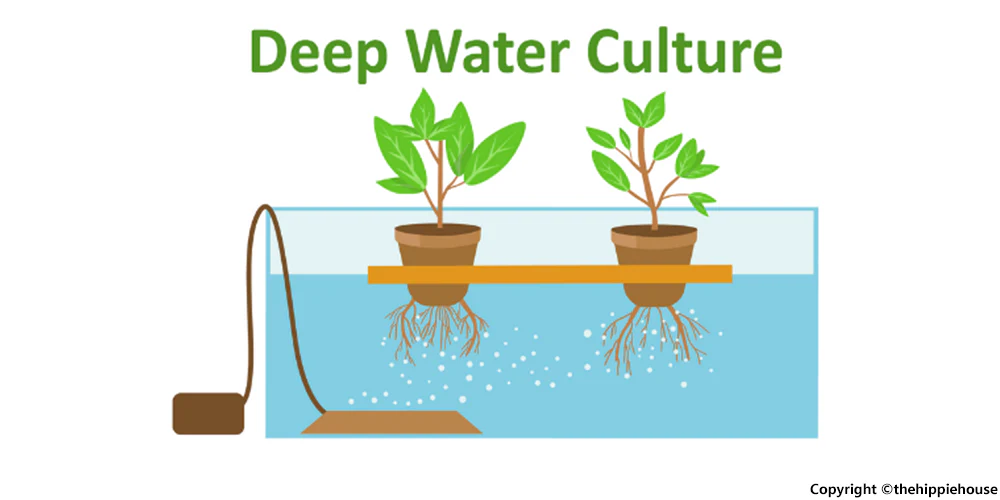Hydroponics has revolutionized gardening, offering a soilless, space-efficient method to grow plants. While it’s commonly associated with leafy greens and herbs, many wonder: Can you grow blueberries in a hydroponic system?
Blueberries are known for their delicious flavor, nutritional benefits, and unique growing requirements—especially their preference for acidic soil. The idea of growing these nutrient-packed berries hydroponically might seem challenging, but with the right approach, it’s entirely achievable.
In this blog, we’ll dive deep into whether blueberries can thrive in hydroponics. From their specific needs to the benefits and challenges of this method, we’ll guide you through everything you need to know to determine if hydroponic blueberries are right for your garden. Whether you’re a beginner or a seasoned gardener, this article is packed with insights to help you grow fresh, juicy blueberries all year round.
Let’s explore how to make this fruitful endeavor a success!
Understanding Blueberries
Blueberries are a unique plant with specific needs. They thrive in highly acidic conditions, with an ideal pH range of 4.5 to 5.5, which aids nutrient absorption. Their shallow roots make them sensitive to water and nutrient availability, requiring precise care for healthy growth.
Nutritionally, blueberries demand a balanced supply of nitrogen, potassium, phosphorus, and trace minerals like iron and manganese. Maintaining this balance in soil can be challenging, but hydroponics offers a controlled alternative.

Hydroponic systems allow gardeners to tailor conditions perfectly for blueberries, ensuring optimal pH, nutrients, and water. This makes it an appealing option for those in urban spaces or with poor soil conditions.
Next, let’s explore how well blueberries adapt to hydroponic systems and the benefits of growing them this way!
Can Blueberries Be Grown Hydroponically?
Yes, blueberries can be grown hydroponically—but it requires attention to detail. With the right care, they can flourish in hydroponics, producing plump, flavorful berries. Success lies in understanding their needs and providing a stable, controlled environment.
Why Hydroponics Works for Blueberries
Hydroponic systems excel at creating precise growing conditions. For blueberries, this means maintaining the ideal pH range of 4.5 to 5.5, ensuring consistent nutrient delivery, and controlling water availability. Since these plants are highly sensitive to fluctuations in their environment, the precision of hydroponics offers a distinct advantage over traditional soil-based gardening.
Moreover, hydroponics eliminates common challenges like poor soil quality or inconsistent irrigation. It’s particularly useful for urban gardeners or those with limited outdoor space, allowing blueberries to thrive indoors or in compact setups.
Challenges to Consider
While the idea of hydroponic blueberries is exciting, it’s not without its challenges. Blueberries have a slow growth rate and take time to establish, which requires patience. They also demand a carefully balanced nutrient solution tailored to their specific needs, especially regarding acidity and trace minerals.
Another factor is cost. Hydroponic systems for blueberries often require advanced setups like deep water culture (DWC) or nutrient film technique (NFT) to support the plant’s growth effectively. These can be more expensive to set up and maintain than systems for faster-growing plants.
Adaptability of Blueberries
These plants, while adaptable, have specific needs that must be carefully managed to ensure success in a soilless environment.
In the next section, we’ll break down the best hydroponic systems for growing blueberries and how to set up a thriving system for your plants.
Which Hydroponic Systems is best for Growing Blueberries?
Choosing the right hydroponic system is crucial for successfully growing blueberries. Each system offers unique benefits, but it’s essential to pick one that meets the plant’s needs for consistent nutrients, moisture, and oxygen. For beginners, Deep Water Culture (DWC) or Drip Systems are ideal due to their ease of use and efficient nutrient delivery.
1. Deep Water Culture (DWC)
Deep Water Culture is a favorite for hydroponic blueberries. This system suspends the plant’s roots in a nutrient-rich solution, delivering constant access to water and essential nutrients. Blueberries thrive in the oxygenated environment created by air pumps, which prevent root rot and encourage healthy growth.

Why It Works:
- Maintains a stable pH level and nutrient balance.
- Provides continuous hydration, ideal for blueberries’ shallow root systems.
2. Drip System
A drip system provides controlled delivery of nutrients and water directly to the plant’s base. For blueberries, this method offers flexibility to adjust feeding schedules based on the plant’s growth stage, ensuring optimal nourishment.

Why It Works:
- Customizable for precise feeding.
- Reduces the risk of overwatering.
By selecting the right hydroponic system, you can create an ideal environment for blueberries to thrive. In the next section, we’ll guide you through setting up your chosen system for maximum productivity.
Step-by-Step Guide to Growing Blueberries Hydroponically
1. Choosing the Right Blueberry Variety
Selecting the right variety is the foundation of successful hydroponic blueberry cultivation. Focus on dwarf or compact varieties, as they are more manageable in confined spaces and adapt well to hydroponic systems. Popular options include:
- Top Hat Blueberries: Perfect for small systems with high yields.
- Sunshine Blue Blueberries: Thrives in a range of temperatures and is self-pollinating.
- Jelly Bean Blueberries: Compact size with sweet, flavorful berries.

By choosing these varieties, you can ensure better growth and productivity in your hydroponic setup.
2. Setting Up the Hydroponic System
A properly assembled system is key to blueberry growth. For beginners, Deep Water Culture (DWC) or Drip Systems are ideal due to their ease of use and efficient nutrient delivery. Here’s how to get started:
- Choose a Reservoir: Ensure it’s large enough to hold nutrient solution for your plants.
- Add Net Pots: Secure your blueberry plants in net pots filled with a soilless medium like coco coir or perlite.
- Install Air and Water Pumps: Maintain oxygenation and circulation to prevent root issues.
- Position Grow Lights: Place LED grow lights above the system to provide consistent lighting.
Ensure your setup allows for easy monitoring of water levels and nutrient concentrations.
3. Nutrient and pH Management
Blueberries require specific nutrients and acidic conditions to thrive:
- Nutrient Mix: Use a hydroponic fertilizer high in nitrogen during growth and phosphorus and potassium during fruiting.
- pH Levels: Keep the pH between 4.5 and 5.5. Regularly test and adjust using pH up or down solutions.
- Calcium and Magnesium: Essential micronutrients to prevent deficiencies and promote healthy growth.
Consistency is critical. Always monitor and replenish the nutrient solution to avoid imbalances.
4. Light and Temperature Requirements
Blueberries thrive in 8–12 hours of light daily and require specific temperature ranges:
- Daytime Temperature: 65–75°F (18–24°C).
- Nighttime Temperature: 55–65°F (13–18°C).
Use full-spectrum LED grow lights for even light distribution, and avoid extreme temperature fluctuations to prevent plant stress.
5. Pruning and Maintenance
To encourage healthy growth and a productive harvest:
- Prune Regularly: Remove dead or weak branches to focus energy on fruit production.
- Pollinate: If your variety isn’t self-pollinating, use a small brush or fan to aid pollination.
- Monitor for Pests or Diseases: Though hydroponics minimizes risks, always inspect plants for signs of issues.
Proper pruning also enhances airflow around the plant, reducing the risk of mold and mildew.
By following these steps, you’ll set yourself up for success in growing blueberries hydroponically. The next section will cover tips for maximizing your harvest and avoiding common pitfalls.
Common Mistakes to Avoid
When growing blueberries hydroponically, there are a few common mistakes that can hinder your plant’s growth and productivity. Avoiding these will help ensure a successful harvest.
1. Ignoring pH Adjustments
Blueberries are highly sensitive to pH levels, and maintaining the right pH is crucial for nutrient uptake. If you fail to regularly check and adjust the pH of your nutrient solution, your plants may show signs of nutrient deficiencies or poor growth.
- Solution: Test your nutrient solution’s pH at least once a week, aiming for a range between 4.5–5.5. Adjust using pH up or down solutions when necessary.
2. Overcrowding Plants in the System
Blueberries need ample space for their roots to spread and for proper airflow around their foliage. Overcrowding can lead to poor air circulation, stunted growth, and higher risks of pests or diseases.
- Solution: Ensure each plant has enough space to grow, especially considering that blueberry plants can become quite bushy. Aim to space them 12–18 inches apart to allow for healthy development.
3. Underestimating the Space or Support Blueberry Plants Need
While blueberry plants are compact in size, they require sufficient space for their roots to expand and their branches to grow. Without proper support, blueberry bushes may collapse or become misshapen.
- Solution: Use stakes or trellises to provide support as the plants grow. Consider the overall size of the plant and plan accordingly, even in a hydroponic system.
4. Using Incorrect Nutrient Solutions
Blueberries require a specific nutrient balance, particularly in their growth and fruiting stages. Using the wrong nutrients can lead to deficiencies or imbalances that harm plant health and fruit production.
- Solution: Use a hydroponic fertilizer designed for acidic-loving plants, ensuring it’s rich in nitrogen during vegetative growth and phosphorus and potassium during the fruiting phase. Regularly monitor nutrient levels to keep them in balance.
Avoiding these mistakes will give your blueberries the best chance at thriving in a hydroponic setup. With proper care, you can look forward to a successful harvest and enjoy the sweet rewards of your efforts.
Harvesting and Yield Expectations
Growing blueberries hydroponically can be a rewarding experience, but it’s important to understand the timeline and yield expectations to manage your garden effectively. Here’s what you need to know:
How Long It Takes for Blueberries to Produce Fruit in Hydroponics
Blueberries typically take about 1–2 years to start producing fruit when grown in hydroponic systems. However, this varies depending on the variety and care provided. Younger plants may require a little longer to establish strong roots, while mature plants can begin fruiting in as little as 6–12 months. Patience is key as blueberries are slow-growing, but once established, they can be quite productive.

Tips for Identifying Ripe Berries
Knowing when your blueberries are ripe is crucial for optimal flavor and texture. Here’s how to identify them:
- Color: Ripe blueberries turn a deep blue color, sometimes with a slight grayish bloom.
- Firmness: Gently squeeze the berry. Ripe blueberries will feel firm yet slightly soft.
- Taste Test: If you’re unsure, the best way to test is by tasting one. Ripe blueberries are sweet and flavorful.
- Time to Harvest: Typically, blueberries are ready to harvest in mid to late summer. Depending on the variety, you may need to pick them multiple times as berries ripen at different rates.
Expected Yield and How Hydroponics Compares to Traditional Soil-Based Methods
Hydroponic blueberries generally yield fewer berries than soil-grown plants in the initial years, but the fruit quality tends to be higher due to better nutrient control. On average, you can expect a yield of about 2–5 pounds per plant per year once they reach maturity.
Compared to traditional soil methods, hydroponic systems offer several advantages:
- Faster growth: With optimal conditions, blueberries in hydroponics may mature quicker.
- Better control: You have more precise control over nutrient levels and pH, leading to healthier plants and potentially more consistent fruiting.
- Space efficiency: Hydroponic systems are compact, making them suitable for smaller spaces.
While the yield may be slightly less than soil-grown blueberries, the controlled environment and quality of the berries make hydroponics a fantastic option for growing this delicious fruit indoors.
Is Hydroponic Blueberry Growing Right for You?
Growing blueberries hydroponically offers several benefits, but it also comes with its own set of challenges. Here’s a breakdown of the pros and cons to help you decide if it’s the right choice for you:
Pros of Hydroponic Blueberry Growing
- Faster Growth: With optimal conditions, hydroponic blueberries can grow faster than in soil.
- Space Efficiency: Perfect for indoor growing or small spaces, as hydroponic systems can be compact.
- Precise Nutrient Control: You have more control over nutrients and pH, leading to healthier plants and potentially higher fruit quality.
- Year-Round Growing: Since it’s indoors, you can grow blueberries regardless of the season, offering fresh fruit throughout the year.
- Reduced Pest Problems: Without soil, there’s less risk of soil-borne pests and diseases, making it easier to manage plant health.
Cons of Hydroponic Blueberry Growing
- Learning Curve: Hydroponics requires some initial learning, particularly around nutrient management, pH levels, and system setup.
- Upfront Investment: You’ll need to invest in the proper hydroponic equipment, such as the system, grow lights, and nutrient solutions, which can be costly.
- Time Commitment: Maintaining a hydroponic system requires regular monitoring and adjustments, making it more time-intensive than soil-based growing.
- Space and Support Needs: Despite being space-efficient, blueberries still require room for their roots and support for their growth, which may require extra planning.
Recommendation
Hydroponic blueberry growing is ideal for hobbyists, plant enthusiasts, or anyone willing to invest in learning about hydroponics and setting up the necessary systems. If you enjoy experimenting with new gardening techniques, have the time to monitor your plants, and are eager to learn the ins and outs of hydroponic gardening, growing blueberries this way can be a rewarding and unique experience.
However, if you’re looking for a low-maintenance, set-it-and-forget-it gardening method, you may want to consider other plants that are less demanding than blueberries in a hydroponic system.

Final Thoughts
Growing blueberries hydroponically is absolutely possible, but it does require thoughtful planning and consistent care. With the right variety, setup, and attention to detail, you can enjoy fresh, flavorful blueberries indoors, regardless of your outdoor climate. The key to success lies in maintaining optimal conditions for your plants, from nutrient levels to light and temperature control.
Hydroponics offers a sustainable and efficient way to grow fruit in smaller spaces, reduce the use of pesticides, and get creative with your gardening methods. If you’re passionate about indoor gardening and willing to invest time and resources, hydroponic blueberries can be a highly rewarding project.
So, why not give it a try? With the right preparation and dedication, you could soon be harvesting your very own hydroponic blueberries, adding a fresh and sustainable touch to your indoor garden.

